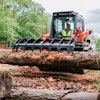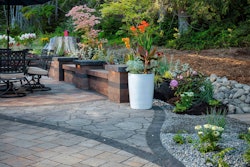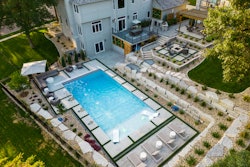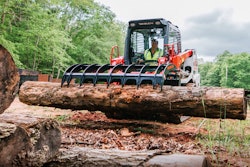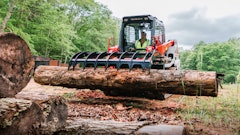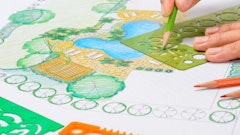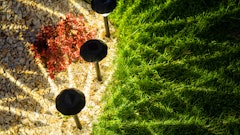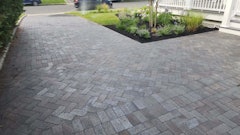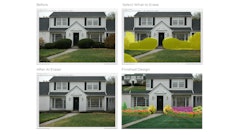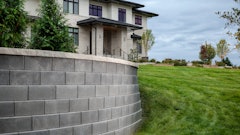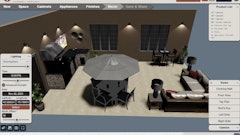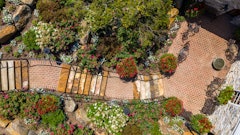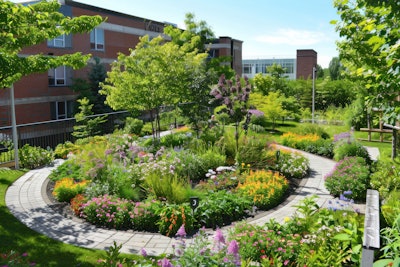
When creating accessible landscapes, adopt a mindful and inclusive approach to ensure outdoor spaces are enjoyable for all. The design process involves considering the user's viewpoint (sight lines), how they’ll maneuver through the area (wheelchair user, walker or by foot) and ensuring the areas are safe and easy to navigate.
In this article, you'll learn how to design outdoor spaces that everyone can enjoy, include some of my design tips and spotlight two universally accessible outdoor spaces (one of which is not far from my home).
What is landscaping for accessibility?
In simple terms, accessible landscaping is about creating space that considers the needs of people with disabilities. Those with disabilities encounter specific challenges related to mobility, navigating their surroundings and accessing basic facilities.
The Americans with Disabilities Act mandates that public spaces, such as gardens, must be accessible to individuals with disabilities. This entails ensuring that pathways can accommodate wheelchairs, walkers and strollers. To do this, landscape architects incorporate features like wide pathways, ramps, accessible seating and platform lifts.
How to design outdoor spaces everyone can enjoy
Before diving into accessible landscaping ideas, I want to emphasize an important point. When designing landscapes for accessibility, take into account the wide range of disabilities and the user's perspective.
A wheelchair user experiences the landscape from a seated position, looking through plants, while a person walking through the space looks down upon the plants. Additionally, those who are visually impaired and deaf or hard of hearing will have a completely different experience.
Nine accessible landscaping ideas
Here are a few additional landscaping ideas that could further enhance these spaces.
1. Hardscaping
Hardscaping materials such as concrete, asphalt, pavers and decking are preferred for walkways and pathways in outdoor spaces like gardens, parks, walking trails and between garden beds. Hardscapes are easy to roll across and typically won’t obstruct wheelchair spokes like loose stone.
Concrete and asphalt
While concrete and asphalt may be practical and rather monotonous in color, their appearance can be transformed when placed alongside a living wall or designed beneath an arch adorned with edible fruits. This way, the concrete and asphalt blend into the background, fully engaging users in an inclusive and immersive experience.
Pavers and decking
Paver walkways can be designed with various patterns and colors to enhance their aesthetic, such as herringbone or basketweave. Decks can be used with accessible areas like overlooking a water feature or creating a gentle sloping bridge over the pond.
2. Garden beds to delight the senses
Creating garden beds with diverse plant materials involves incorporating tiering, texture, color, fragrance and seasonal interest. This thoughtful design approach enhances accessibility in landscaping, providing visual, tactile and aromatic experiences for all individuals. Additionally, considering sustainability adds to an eco-friendly garden.
Tiering
Tiering, or arranging plants at varying heights, involves placing taller shrubs and trees at the back, medium-height plants in the middle and shorter perennials, flowers and ground cover at the front. This approach allows both seated and standing individuals to enjoy the landscape fully from their different viewpoints.
Texture
Textures, including plants with soft, fuzzy or textured leaves, can create a tactile experience for those with visual impairments, deepening their connection to the outdoor environment.
Color
Color can influence visual perception, enhance contrast for individuals with low vision, direct movement within a space and influence emotional reactions to the surroundings. Azaleas, annual flowers and perennials can add a pop of color to any bed.
Fragrance
Aromatic plants provide a rich experience for those with visual impairments, allowing them to enjoy the garden through its scents. This not only fosters relaxation and well-being but also improves mood and attracts beneficial pollinators. Herbs are especially known for their strong fragrances.
Seasonal interest
Various plants provide a range of sensory experiences that change with the seasons. In spring, eastern redbud and forsythia let us know winter is saying goodbye. The sweet scent of honeysuckle and sweet autumn clematis fills the air during the summer. While brilliant fall foliage arrives in autumn.
Design tip: Consider designing garden beds for winter interest using winterberry and lenten rose. Winterberry keeps its red berries in winter, and lenten rose blooms in late winter to early spring when most other plants are dormant.
3. Raised garden beds
Raised garden beds allow people of all abilities to engage with nature by allowing them to work with the soil and plants more closely, reducing bending or kneeling, and for wheelchair users, the height accommodates their chairs comfortably.
4. Trellises
Trellises offer a fantastic solution for vertical gardening, enhancing plain walls, bringing plant material closer and adding visual interest. Trellises can support climbing roses, espalier evergreens and fruit branches.
5. Outdoor living walls
Outdoor living walls improve accessibility by introducing plants to vertical spaces, making nature more approachable. They offer rich sensory experiences through textures, fragrances and edible plants, especially for the visually impaired.
Design tip: Combining soft moss and velvety leaves like lamb's ears creates a tactile experience, while fragrant herbs like lavender and mint contribute soothing aromas.
6. Arches
Arches in landscaping create accessible pathways that guide movement while bringing beauty and nature into an immersive experience. Being beneath a lush, plant-covered arch can be a magical experience. They offer a sense of enclosure and wonder as light filters through the greenery. Vibrant flowers like climbing roses or edible grapevines provide sensory elements inviting touch, scent, and taste.
7. Water features
Water features enhance accessible landscaping by providing visual appeal and sensory stimulation. A koi pond with elegant fish gliding through the water or a small waterfall surrounded by smooth stones can create a calming atmosphere for individuals experiencing anxiety.
Decorative fountains can serve as focal points in an accessible garden and allow those with visual impairments to enjoy the flowing water's delightful sounds and sensations.
Design tip: Designing wide, stable pathways and seating areas with tables that accommodate wheelchairs near these water features ensures that everyone can appreciate the serene beauty of nature.
8. Kinetic movement
Integrating kinetic movement through outdoor sculptures and large wind chimes in an accessible landscape captivates various senses. Kinetic movement makes interactive art pieces react to elements such as wind and water.
Outdoor sculptures
Large metal and copper sculptures that move with the wind provide a dynamic visual experience, capturing sunlight and casting ever-changing reflections that individuals with varying levels of vision can enjoy.
Large wind chimes
Large wind chimes introduce a soothing auditory element that enhances accessibility for those who rely on sound for navigation or relaxation. The wind blows, and the chimes react, helping individuals with visual impairments delight in the sounds.
Including chimes with various materials, like metal, wood or shells, makes the experience even more enjoyable.
9. Play areas
Designing inclusive and enjoyable play areas enables children of all abilities to savor outdoor activities while promoting a sense of community and support. This holds true for those with physical conditions like cerebral palsy that affect mobility, neurodevelopmental disorders such as autism that impact social skills or genetic conditions like Down syndrome that may hinder developmental progress.
Here are several strategies to make play areas more accessible through landscaping:
- Incorporate rubberized surfaces
- Add sensory elements
- Provide tactile maps and Braille signage
- Integrate vibration-based play structures
- Install sensory bins
- Hang safety swings
- Build side-by-side slides
Design a landscape for everyone
Landscaping for accessibility focuses on creating outdoor spaces that everyone can enjoy, irrespective of disabilities. By encouraging outdoor connection, these spaces help alleviate anxiety and provide a sense of tranquility and inclusion, reinforcing the idea that nature is a refuge for everyone.
